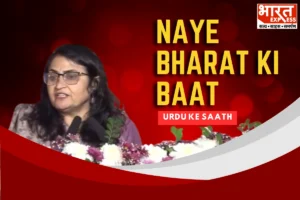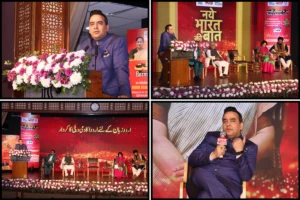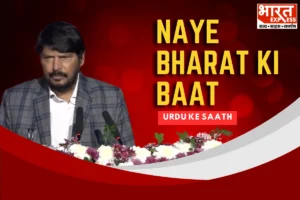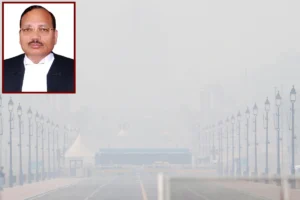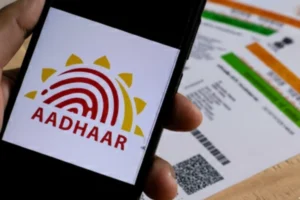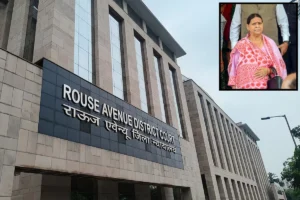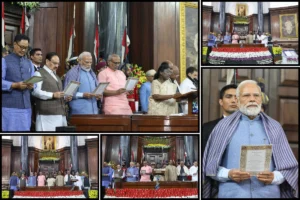
PM Modi following ideals of Shree Ram
In the annals of history, dates bear profound significance as they serve as poignant reminders of transformative events that reshape eras and leave an enduring impact on generations. The year 1857 is remembered as a watershed moment in Indian history and the emergence of a revolutionary spirit. While August 15th has witnessed many ordinary events, the dates of August 15th, 1947, and January 26th, 1950, are particularly significant since they mark watershed moments in Indian history.
Similarly, Shri Narendra Modi’s introduction as Prime Minister on May 26, 2014 transformed that date from a mere calendar entry to a historic event. Certain dates transcend the mundane and represent paradigm shifts in the tapestry of civilization. For future generations, January 22, 2024, will undoubtedly be more than a date; it will be a contemporary genesis, providing a new viewpoint on India’s cultural environment.
Our country’s cultural voyage is intriguing, extending from the beautiful Himalayas in the north to the enormous coastlines in the south, lovely woods in the east, and the expansive Hindu Kush in the west. Jammu and Kashmir crowns the country, the Ganga serves as a necklace around its heart, and the vast ocean washes its feet. Mother Bharati, cradling many cultures, has born and welcomed civilizations throughout history.
Since independence, Bharat has seen cultural and political landmarks ranging from the reconstruction of the Somnath temple, the proclamation of emergency, the implementation of Mandal Commission recommendations, and the transforming day of May 26, 2014. Examining the timeframe from May 26, 2014, to January 22, 2024, reveals not only a trickle but the creation of an immense ocean, each drop adding considerably.
Since taking the oath, Prime Minister Shri Narendra Modi has faced numerous obstacles. The current governance structure and awareness setting, inherited post-independence, frequently found the language of Indianness and Bharat consciousness oppressive. A close examination reveals a waning emphasis on the self during the independence movement, with characteristics such as self-language, self-dress, self-rule, and self-culture downplayed.
Crucially, no country or civilization has flourished by compromising its identity. Contrasting this with Western nations, Europe has seamlessly integrated cultural symbols with modern development. In India, however, material development is an issue of separate discussion coexisted with the neglect of cultural heritage, exemplified by Lord Shri Ram residing in a tent at his birthplace.
Prime Minister Shri Narendra Modi’s leadership has proved that with strong commitment and clear aims, a nation can advance both its cultural icons and economic prosperity at the same time. When Modi ji took office, India was ranked 11th in the world in terms of economic power. He handled corruption, bureaucratic lethargy, and dynastic interests, guiding the country away from the path of appeasement.
Lord Shri Ram’s experiences have profoundly influenced Modi ji’s life. His social development occurs in three distinct stages. Initially, as a Pracharak of Rashtriya Swayamsevak Sangh, he traveled across various regions, engaging with people, understanding their complaints, and developing bonds. A comparison comes from Lord Shri Ram’s early life, which was distinguished by extended journey from north to south, garnering him affection and leadership not only in Ayodhya but across Aryavarta.
Lord Shri Ram’s narrative, beginning with constraints, prompts reflection. His journey, from Kaikeyi’s manipulation to exile, raises the question: Would Shri Ram have become the king of the entire country if not for these challenges? As the true Avatar of God, Shri Ram’s struggles convey a crucial lesson for future leaders—to lead a nation, one must first comprehend it. Understanding the boatman’s affection, the sages’ grief, Ahilya’s pain, and Shabari’s devotion, and fostering friendships like Sugriva and allies like Hanuman becomes imperative. Modi ji’s social endeavours echo Lord Shri Ram’s ideals.
Lord Shri Ram, who had no personal hostility with demons, sought to defend sages’ sacrifices. However, moving on with tremendous endeavours brings personal foes and challenges to personal life, similar to the opposition Modi ji encountered. When considering Lord Shri Ram’s trials, one may wonder why he traveled through forests during times of trouble. Couldn’t Lord Rama ask Ayodhya to send its massive army to Lanka directly? Why would Lord Rama befriend Sugriva if he knows that Ravana is feared from Bali? The solution comes in the underlying goal—not just to free Mother Sita, but also to create standards of decorum. The Sugriva-Bali episode demonstrates that fighting injustice requires respecting ethical principles.
Modi ji has also demonstrated during his tenure that one should not succumb to injustice and should not turn to further forms of injustice to overcome it. Modi ji has unflinching faith in his backward and tribal brothers and sisters. Today, the BJP, led by Modi ji, has ministers and MLAs from the most backward communities i.e. out of 76 ministers, 27 ministers are from the OBC, a record 35%.
If we look closely at Modi ji’s tenures, we can see that they are interconnected phase by phase. He moderated the governing system during his first term. By getting the bureaucratic system back on track. Established the ideals of cleanliness and transparency in politics. If we look at Lord Shri Ram’s life journey, we will see that the earliest phase of his life demonstrates this. In the early portion of his existence, Lord Ram established a calm, orderly, and people-centred atmosphere by making the system safe from Ayodhya to Lanka.
During his second tenure, Modi ji accelerated economic progress. India became the world’s fifth largest economy. The repeal of Article 370 paved the ground for economic prosperity among the people of Jammu and Kashmir. A new series of peace agreements began in the Northeast, to reduce left-wing extremism, bringing tribal communities into the mainstream of economic development, and successful efforts to empower marginal farmers and women through the establishment of the Ministry of Cooperation and introduction of new criminal justice laws. The country gained independence from the emblems of colonial legacy. A new Parliament building was constructed, Kartavya Path was named, Ujjain Mahakalok was constructed, Kashi Vishwanath Corridor was constructed, Somnath Temple was adorned with gold, new networks of roads, bridges, and railway tracks were constructed, and India had its most prosperous period in history. A highly successful G-20 meeting was also organised.
This was likewise the case in Ayodhya during Lord Shri Ram’s rule. It has been claimed of Ram Rajya that no one has a body ailment in Ram Rajya, and everyone is healthy. In Ram Rajya, no one dies young or suffers agony. No one is destitute, depressed, or poor. Nobody is uneducated or has inferior skills.
Lord Shri Ram led his country to such high levels of growth and good administration that the title ‘Ram Rajya’ has become synonymous with good governance. However, he did not do all of this while disparaging his ancestors. Lord Shri Ram established the Rameshwaram Tirtha. He prayed to his forebears in Gaya. According to the Ramkatha, which is popular among the Sankal caste, Lord Ram arrived to the Santhalans’ land after killing Ravana, constructed a Shiva shrine, and worshiped him alongside Mother Sita.
Today, a monumental Ram temple is built under the leadership of Honourable Prime Minister Shri Narendra Modi ji. Many generations have waited for this temple. Today, lakhs of souls would be satisfied. Today, not only is Lord Shri Ram returning to Ayodhya, but Ram Rajya has also arrived in the country, and we are all extremely lucky to witness such a historical moment.
Jai Shri Ram!
Also Read: After Ram Temple Pran-Pratishtha, PM Modi Lights Diyas And Celebrates Diwali
To read more such news, download Bharat Express news apps












